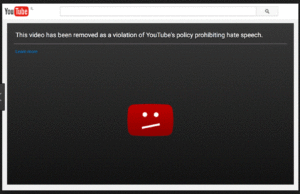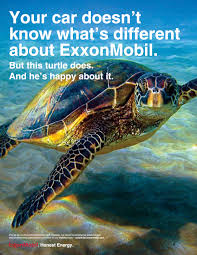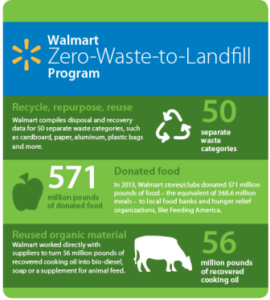More Cheerios, Please
June 12 marks the 50th anniversary of Loving v. Virginia, the Supreme Court case that struck down the anti-miscegenation laws that made mixed-race marriages illegal. America has come a long way with race relations in half a century, but we’ve got more work to do, especially in television and advertising.
Remember the Cheerios ad with the mixed-race family? It prompted threats of boycotts and some went so far as to proclaim it genocide of the white race. The responses to the commercial posted on YouTube were so vitriolic that Cheerios shut down the comments section. In the days, months and years that followed, people expressed their open-mindedness, bashing the closed-minded who were angered by the ad. And they were right to do so. But there was one issue I didn’t see discussed: the prominence of children who look mixed-race in advertising and television and America’s comfort with that.
Why do I say they look mixed-race? We’re all a combination of dominant and recessive traits, so — unless you know someone’s biological family tree — you can’t verify one’s racial identity. But there are some people we know are mixed-race. Take for the example The Cosby Show. Lisa Bonet, who is mixed-race, played Denise Huxtable, the daughter of two brown-skinned parents. There were no screams of boycotting the show because there was a mixed-race child. Halle Berry, another mixed-race actress, is regarded as one of America’s most beautiful women. And there were no problems with mixed-race actress Meaghan Markle — until she started dating Prince Henry, a white man.
When I examine these facts, I see a deeply illogical contradiction: America is OK with the product of mixed-race relationships, but not accepting of seeing people of different races in loving, respectful relationships.
This issue also strikes a personal note with me. Both my grandparents were black, and my mother, who died seven years ago, had a very fair complexion. I’ve gotten used to people asking if she was mixed race. When that happens, I cut straight to the core of the issue, smiling and saying, “It depends. Did your grandmother cheat on your grandfather?” I usually get a shocked facial expression, demonstrating that I’ve hit the right nerve. Why do I respond that way? Mixed-race marriages were illegal in many states in the 1950s when my mother was born, especially in our home state — then-legally segregated Mississippi. For my mother to be mixed-race, my grandmother would had to have been raped or had a secret relationship with a white man, possibly one who crept through her back door at night or forced her to have sex at work. (This would have been especially troubling, given that my grandparents were married five years before my mother, their first child, was born.) Adultery and rape? Not topics one mentions in casual conversation, and certainly not about one’s mother or grandmother. But I cannot tell you the number of times people asked my mother if she was mixed-race. Her reaction was so negative that I spent the first years of my life thinking being white was a bad thing. I understood it as I grew older, and I found my own way of responding.
My mother always made clear her disdain for those who valued her for her complexion or hair texture. The irony? The same people who loved my mother for having light skin were probably among those angered by the sight of the loving, mixed-race family we saw in the Cheerios commercial. If that little girl had been in a commercial with two black parents, I suspect no one would have complained.
What does this all mean? As a minority woman, I can say it appears America is OK with raping us, forcing us into sexual relationships or having secret consensual relationships with us. It’s OK to have sex with minority men. And any children who result will be deemed beautiful.
But don’t dare have a respectful, loving, public relationship.
People behave as though mixed-race children are new. They aren’t. In fact, mixed-race children were prevalent enough that many states had one-drop rules, laws that defined one’s race as black. “State courts have generally upheld the one-drop rule, but some have limited the definition to one thirty-second or one-sixteenth or one-eighth black ancestry, or made other limited exceptions for persons with both Indian and black ancestry” (Davis, 1991). One-thirty-second? Really?
What is new is that people can tell their true heritage and everyone can marry, regardless of race. “In 2015, 17 percent of all U.S. newlyweds had a spouse of a different race or ethnicity, marking more than a fivefold increase since 1967, when 3 percent of newlyweds were intermarried, according to a new Pew Research Center analysis of U.S. Census Bureau data” (Livingston & Brown, 2017).
Advertising and television should do better jobs of showing mixed-race couples and casting mixed-race people as mixed-race. After all, they, too, are America.
America needs more Cheerios commercials, more realistic depictions of relationships, more acceptance of mixed-race relationships.
References
Davis, F.J. (1991). Who is black? One nation’s definition. Retrieved from http://www.pbs.org/wgbh/pages/frontline/shows/jefferson/mixed/onedrop.html
Livingston, G., & Brown, A. (2017, May 18). Intermarriage in the U.S. 50 years after Loving v. Virginia. Pew Research Center. Retrieved from http://www.pewsocialtrends.org/2017/05/18/intermarriage-in-the-u-s-50-years-after-loving-v-virginia/





 nes and breaking up with someone you had not yet partnered with in the first place.
nes and breaking up with someone you had not yet partnered with in the first place.



